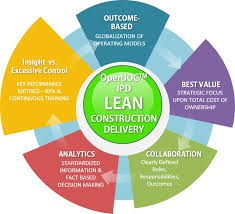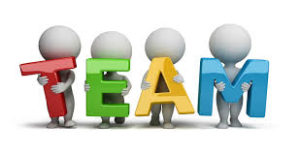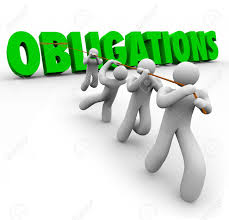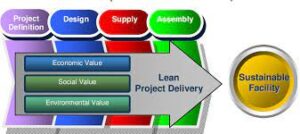Project Management
Successful projects are usually the result of careful planning and the talent and collaboration of a project’s team members. Projects can’t move forward without each of its key team members, but it’s not always clear who those members are, or what roles they play. Here, we’ll describe five roles – project manager, project team member, project sponsor, executive sponsor and business analyst – and describe their associated duties.
In successful project management, clarity in roles and responsibilities is essential for cohesive teamwork and effective execution. Each role plays a crucial part in ensuring that projects meet objectives on time and within budget, leveraging the unique skills and perspectives of its members.
-
Project Manager: The project manager is at the helm of the project, responsible for overall planning, execution, and delivery. They coordinate resources, set milestones, and manage timelines to ensure that the project progresses smoothly. Communication is key as they liaise between stakeholders, team members, and management, providing regular updates on progress and addressing any issues that arise. The project manager’s leadership ensures alignment with strategic goals and adherence to project scope.
-
Project Team Member: Project team members are integral to the project’s success, bringing specialized skills and expertise to specific tasks and deliverables. They work collaboratively under the project manager’s guidance, contributing to planning, execution, and problem-solving throughout the project lifecycle. Each team member’s contributions are vital in achieving milestones and maintaining project quality, fostering a supportive environment where knowledge sharing and innovation thrive.
-
Project Sponsor: The project sponsor champions the project within the organization, providing strategic direction and resources. They secure funding, approve major decisions, and advocate for the project’s importance and alignment with organizational objectives. The sponsor plays a crucial role in resolving high-level issues and ensuring that the project stays on track to deliver expected outcomes, while also acting as a bridge between the project team and executive leadership.
-
Executive Sponsor: An executive sponsor holds a senior leadership role and provides overarching support and guidance to the project sponsor. They align the project with the organization’s strategic priorities, ensure resource allocation, and resolve escalated issues that impact the project’s trajectory. Executive sponsors offer high-level oversight and advocacy, leveraging their influence to navigate organizational challenges and ensure the project’s success aligns with broader business goals.
-
Business Analyst: Business analysts contribute valuable insights by analyzing requirements, identifying opportunities for improvement, and translating stakeholder needs into actionable plans. They conduct feasibility studies, assess risks, and refine project scopes to enhance efficiency and effectiveness. Business analysts facilitate communication between technical teams and stakeholders, ensuring that solutions meet business objectives and deliver measurable value throughout the project lifecycle.
What is Project Management?
More specifically, what is a project? It’s a temporary endeavor undertaken to create a unique product, service or result.
A project is temporary in that it has a defined beginning and end in time, and therefore defined scope and resources.
And a project is unique in that it is not a routine operation, but a specific set of operations designed to accomplish a singular goal. So a project team often includes people who don’t usually work together – sometimes from different organizations and across multiple geographies.
The development of software for an improved business process, the construction of a building or bridge, the relief effort after a natural disaster, the expansion of sales into a new geographic market — all are projects.
And all must be expertly managed to deliver the on-time, on-budget results, learning and integration that organizations need.
Project management, then, is the application of knowledge, skills, tools, and techniques to project activities to meet the project requirements.
Project Management Techniques
Project management techniques are tools and strategies used to plan, execute, and control projects. They help project managers to streamline workflows, manage resources effectively, and ensure that projects are completed on time, within budget, and to the desired quality standards. Here are some of the most popular project management techniques:
-
Gantt Chart: The Gantt chart is a visual tool that shows the tasks in a project, their duration, and the dependencies between them. It helps to plan and schedule the project, identify critical paths and potential bottlenecks, and track progress.
-
Critical Path Method (CPM): CPM is a technique that helps to identify the critical path of a project, which is the sequence of tasks that determines the project’s duration. It helps to optimize resources and identify the earliest and latest start and finish times for each task.
-
Agile Methodology: Agile is a flexible and iterative approach to project management that focuses on delivering value to the customer in small increments. It involves breaking the project into short sprints, prioritizing features based on customer feedback, and adapting to changing requirements.
-
Kanban: Kanban is a visual workflow management technique that helps teams to visualize and manage their work. It involves using a board with columns for each stage of the workflow, and moving tasks from one column to the next as they are completed.
-
Scrum: Scrum is an agile framework for managing complex projects. It involves a small, cross-functional team working together in short sprints to deliver working software or other deliverables.
-
Six Sigma: Six Sigma is a quality management technique that aims to reduce defects and improve process efficiency. It involves using statistical methods to identify and eliminate process variations, and using data to drive decision-making.
-
Lean: Lean is a project management technique that focuses on eliminating waste and maximizing value. It involves optimizing processes, reducing cycle times, and minimizing defects and errors.
-
Risk Management: Risk management is a technique that helps to identify, assess, and mitigate risks in a project. It involves identifying potential risks, assessing their likelihood and impact, and developing strategies to mitigate or avoid them.
In conclusion, project management techniques are essential tools for any project manager. The choice of technique depends on the project’s specifics, complexity, teams involved, and other factors. By using these techniques, project managers can plan, execute, and control projects effectively, delivering value to customers while staying within budget and timelines
Classic technique
The simplest, traditional technique is sometimes the most appropriate for running projects. It includes preparing a plan of upcoming work, estimating tasks to perform, allocating resources, providing and getting feedback from the team, and monitoring quality and deadlines.
Where to use: this technique is ideal for running projects performed by small teams, when it’s not really necessary to implement a complex process.
Unleashing the Power of the Classic Technique
In the dynamic world of project management, sometimes simplicity reigns supreme. The classic technique, rooted in time-tested practices, offers a straightforward and effective approach to overseeing projects. By meticulously preparing a comprehensive plan, estimating tasks, allocating resources, fostering team collaboration, and diligently monitoring quality and deadlines, project managers can navigate the intricacies of any endeavor with finesse.
Let’s delve deeper into the versatility and application of this technique, exploring its suitability for small team projects where the implementation of a complex process may not be necessary.
Unveiling the Essence of the Classic Technique
Streamlined Planning for Success
At the core of the classic technique lies the art of planning. A meticulous and well-thought-out plan is the foundation upon which successful projects are built. By mapping out the upcoming work in detail, project managers establish a clear roadmap for their team to follow. This comprehensive plan not only enhances productivity but also serves as a guiding light throughout the project’s lifecycle.
Precise Task Estimation for Optimal Efficiency
Accurate task estimation is a key driver of project efficiency. The classic technique emphasizes the need to break down complex projects into manageable tasks, allowing for a more accurate assessment of effort and resources required. By leveraging historical data and expert judgment, project managers can estimate tasks with precision, setting realistic expectations and avoiding potential bottlenecks.
Resource Allocation: Maximizing Potential
Effective resource allocation lies at the heart of successful project execution. The classic technique recognizes the importance of optimizing resource utilization. By carefully assigning resources based on their skills, availability, and relevance to specific tasks, project managers ensure a seamless workflow. This judicious allocation of resources minimizes downtime, promotes collaboration, and maximizes the potential for project success.
Cultivating Feedback: A Pillar of Growth
Constructive feedback is the lifeblood of continuous improvement within project teams. The classic technique fosters an environment where feedback flows freely, enabling team members to learn from each other’s experiences and refine their approach. Regular feedback sessions, facilitated by the project manager, encourage open communication, promote innovation, and empower team members to perform at their best.
Vigilance in Quality Assurance and Deadlines
Maintaining a vigilant eye on quality and deadlines is paramount in project management. The classic technique places great importance on continuously monitoring and ensuring the highest standards of quality throughout the project’s lifecycle. By implementing rigorous quality assurance measures and closely tracking deadlines, project managers can swiftly identify and rectify any deviations, ensuring timely delivery of a superior end result.
Waterfall technique
The Waterfall technique is a linear approach to project management where each phase of the project follows a sequential order. It is often referred to as the traditional project management methodology and is best suited for projects that have well-defined and predictable outcomes.
One of the benefits of the Waterfall technique is that it provides a clear structure and timeline for the project, making it easier to plan, execute and control. The use of Gantt charts and other project management tools make it easier to track progress and identify potential bottlenecks.
However, the downside of this technique is that it lacks flexibility, making it difficult to adapt to changes or unexpected events during the project. Once a phase is completed, it cannot be easily revisited, which can lead to delays or additional costs if changes need to be made.
An example of the Waterfall technique in action could be the development of a new software application. The project would start with the planning phase, where the requirements and specifications are gathered and documented. Once the requirements are finalized, the design phase would begin, where the software architecture is created, and the user interface is designed. Next, the development phase would begin, where the code is written, and the application is built. After the development phase is complete, the testing phase would begin, where the application is tested for bugs and errors. Finally, the project would end with the deployment phase, where the application is released to users.
In conclusion, the Waterfall technique is a useful approach for complex projects that require a detailed phasing structure. While it lacks flexibility, it provides a clear structure and timeline for the project, making it easier to plan, execute and control.
FAQ
Q1: What is project management? A1: Project management refers to the application of knowledge, skills, tools, and techniques to project activities in order to meet the project requirements. It involves planning, organizing, and controlling various aspects of a project to ensure its successful completion.
Q2: What are the key roles in project management? A2: The key roles in project management include: A2.1: Project Manager: Responsible for overall project planning, coordination, and control. A2.2: Project Team Member: Contributes to project execution and delivers assigned tasks. A2.3: Project Sponsor: Provides financial resources and high-level support for the project. A2.4: Executive Sponsor: Holds ultimate accountability and provides strategic direction for the project. A2.5: Business Analyst: Analyzes project requirements and facilitates communication between stakeholders.
Q3: What are project management techniques? A3: Project management techniques are tools and strategies used to plan, execute, and control projects. Some popular techniques include: A3.1: Gantt Chart: Visualizes project tasks, duration, and dependencies. A3.2: Critical Path Method (CPM): Identifies the critical path and optimizes task scheduling. A3.3: Agile Methodology: Focuses on iterative development and customer value delivery. A3.4: Kanban: Visual workflow management technique to track work progress. A3.5: Scrum: Agile framework for managing complex projects with short sprints. A3.6: Six Sigma: Quality management technique to reduce defects and improve efficiency. A3.7: Lean: Focuses on eliminating waste and maximizing value in processes. A3.8: Risk Management: Identifies, assesses, and mitigates project risks.
Q4: What is the Classic technique in project management? A4: The Classic technique is a simple, traditional approach that involves preparing a plan, estimating tasks, allocating resources, providing team feedback, and monitoring quality and deadlines. It is suitable for small team projects that don’t require complex processes.
Q5: What is the Waterfall technique in project management? A5: The Waterfall technique is a linear project management approach where each phase follows a sequential order. It is best suited for projects with well-defined and predictable outcomes. It provides a clear structure and timeline but lacks flexibility to adapt to changes once a phase is completed.













